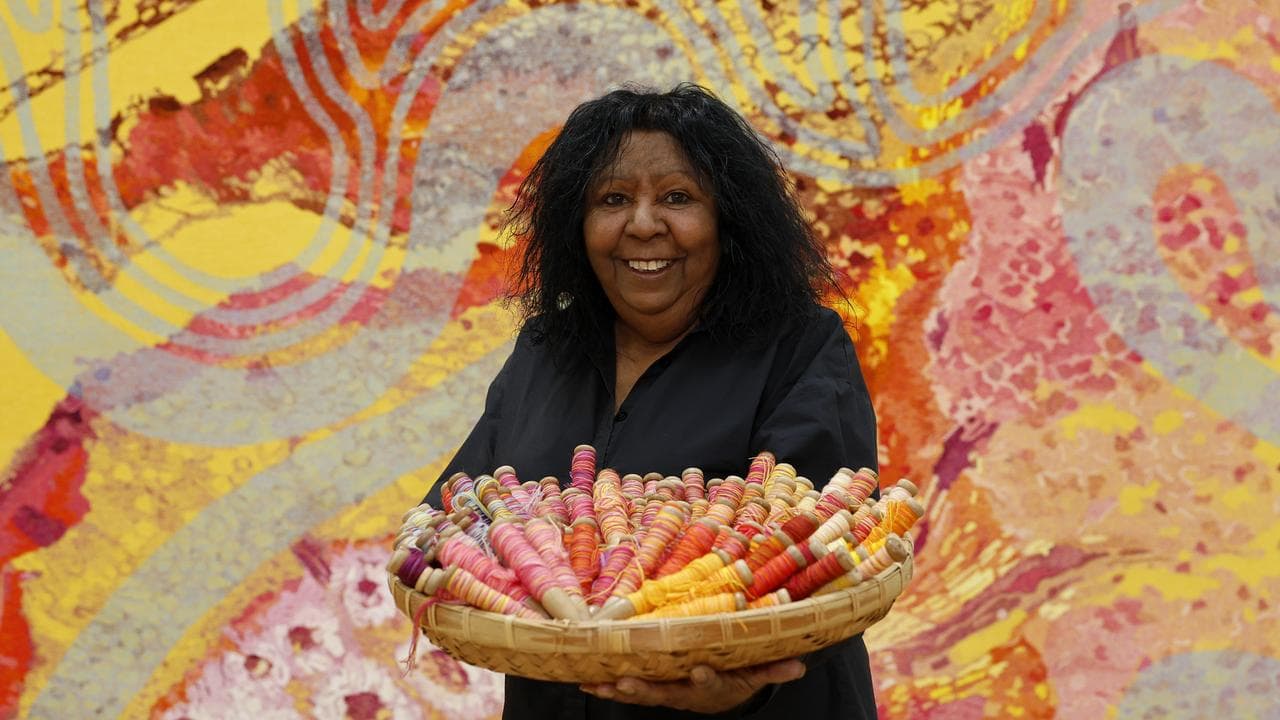
A hand-woven tapestry that's as wide as a tennis court will be hung across two storeys of a major new hospital.
Measuring just above four by 10 metres, the artwork woven by the Australian Tapestry Workshop will be hung in the shape of an ellipse, or hollow cylinder, making it the nation's first major three-dimensional tapestry project.
"We haven't done anything quite like this before, we have done large-scale tapestries woven in multiple panels and double-sided tapestries, but we have never done one that hangs in the round," said senior weaver Amy Cornall.
Titled Welcome to Country – now you see me: seeing the invisible, the tapestry is so big it will be installed across two levels in the foyer of Melbourne's $1.5 billion Footscray Hospital, opposite the Maribyrnong River.
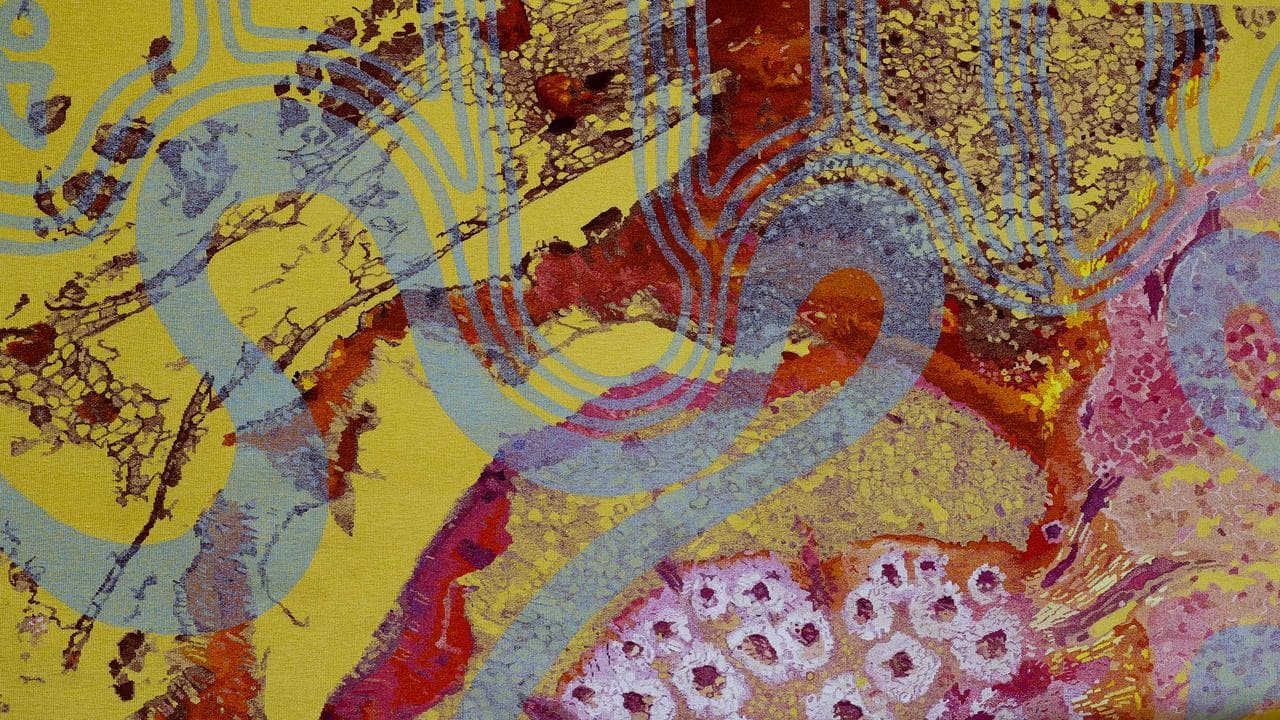
The finished artwork weighs more than 135 kilograms and will be suspended from a specially designed frame using extra-strong Velcro fasteners.
Designed by First Nations artists Maree Clarke and Mitch Mahoney, it depicts the microscopic cellular structures of river reeds, overlaid with blue lines representing the flow of a river.
River reeds have been a feature of Clarke's work for about two decades, and her part in the design came from tiny slices of reed cells that she viewed under a microscope at Melbourne University.
Clarke has also spent hours inside the old Footscray Hospital while her husband received medical care, and remembers there were only advertisements to stare at on the walls: "it was boring as batshit really," she said.
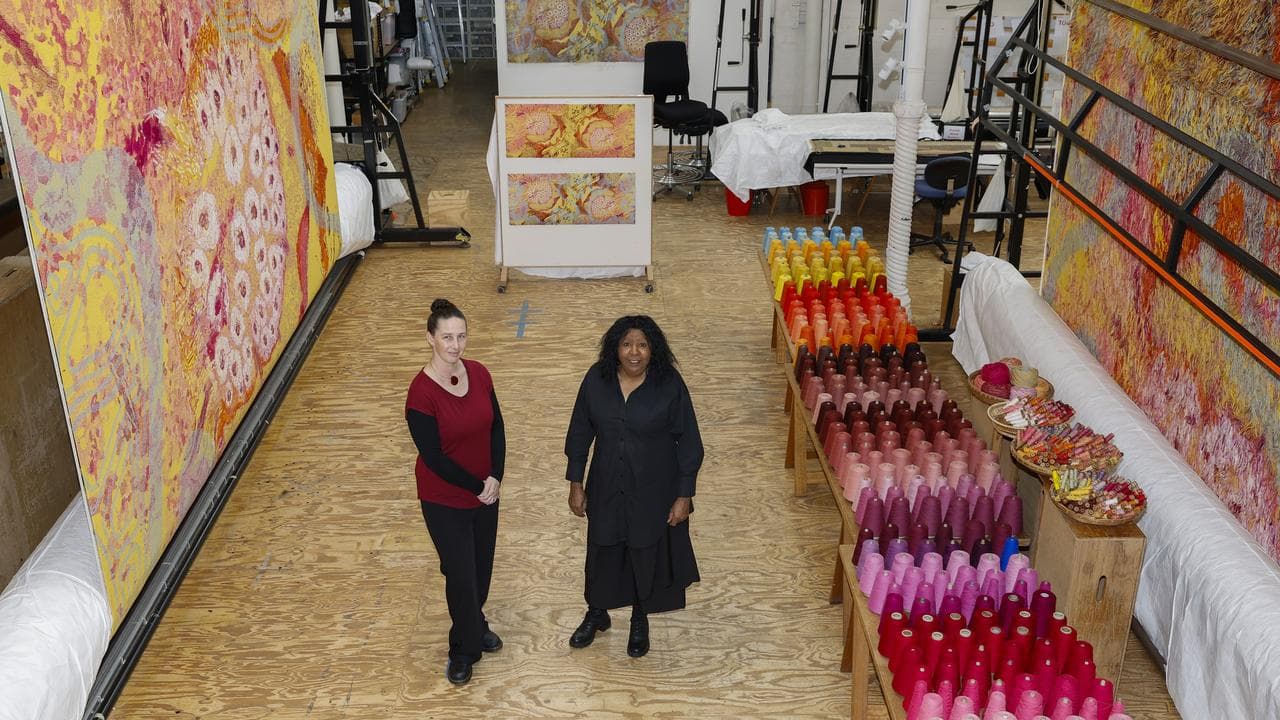
She hopes the Welcome to Country tapestry in the new building will be not only visually interesting, but also calming for patients and their families.
"I think every time you look at it you're going to see something different, I just love how the blue skims across the top like a river, and the colours are just beautiful," she said.
On Tuesday the workshop is hosting a ceremony to begin the process of cutting down the tapestry from its two giant looms.
More than a year of painstaking weaving will then be unrolled, enabling the artists and weavers to view the project as a whole for the first time.
A dozen weavers have been hard at work since April 2024, with the tapestry taking more than 10,000 hours to complete.
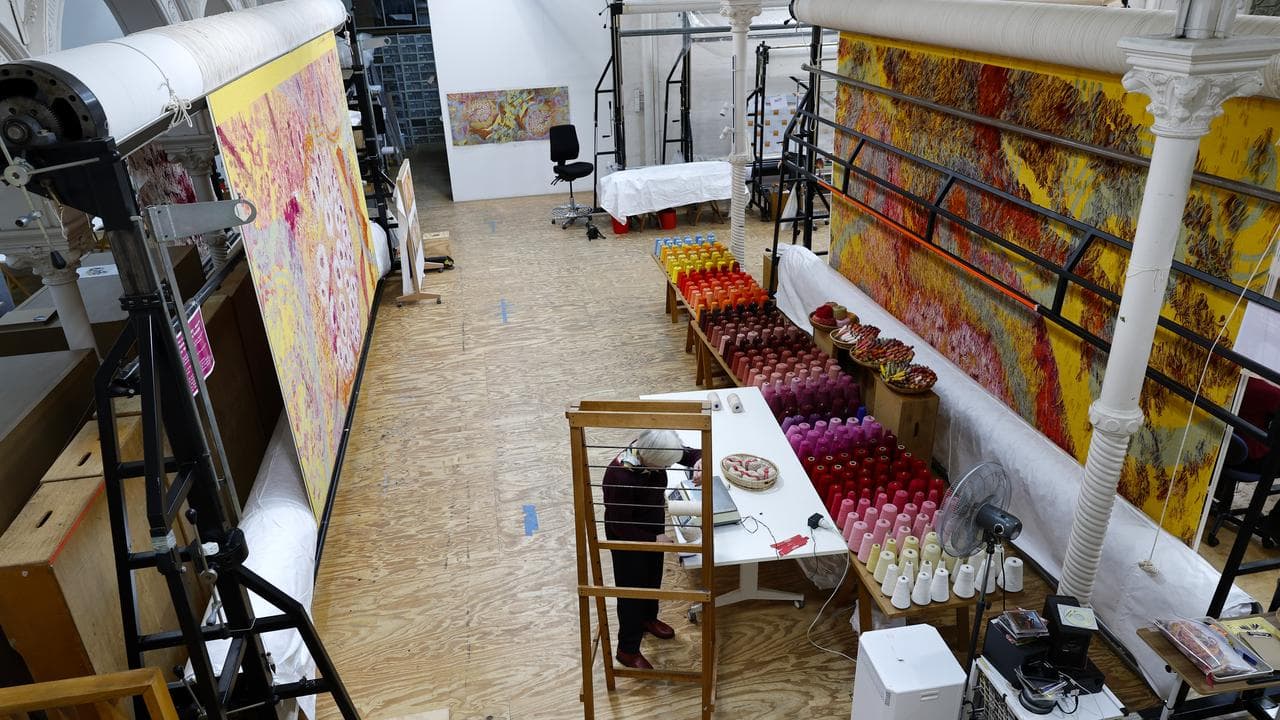
"On a good day we can do an area that's maybe the size of an A4 piece of paper, so it's quite slow, but you can see it progressing from week to week and that's quite satisfying," said Cornall.
Artist Mitch Mahoney says working with a team of weavers has been the ultimate collaboration.
"To have twelve people create one work that looks like one hand made it is amazing, yet it has a bit of all of them in it,” he said.
Hanging the artwork in an elliptical shape will mean people can stand directly under it and see the reverse side that is usually hidden from view, revealing hundreds of loose threads.
"The front is all resolved as the artist has intended it to be, the back is the nuts and bolts of how it's made, the evidence that it was made by people," said Cornall.
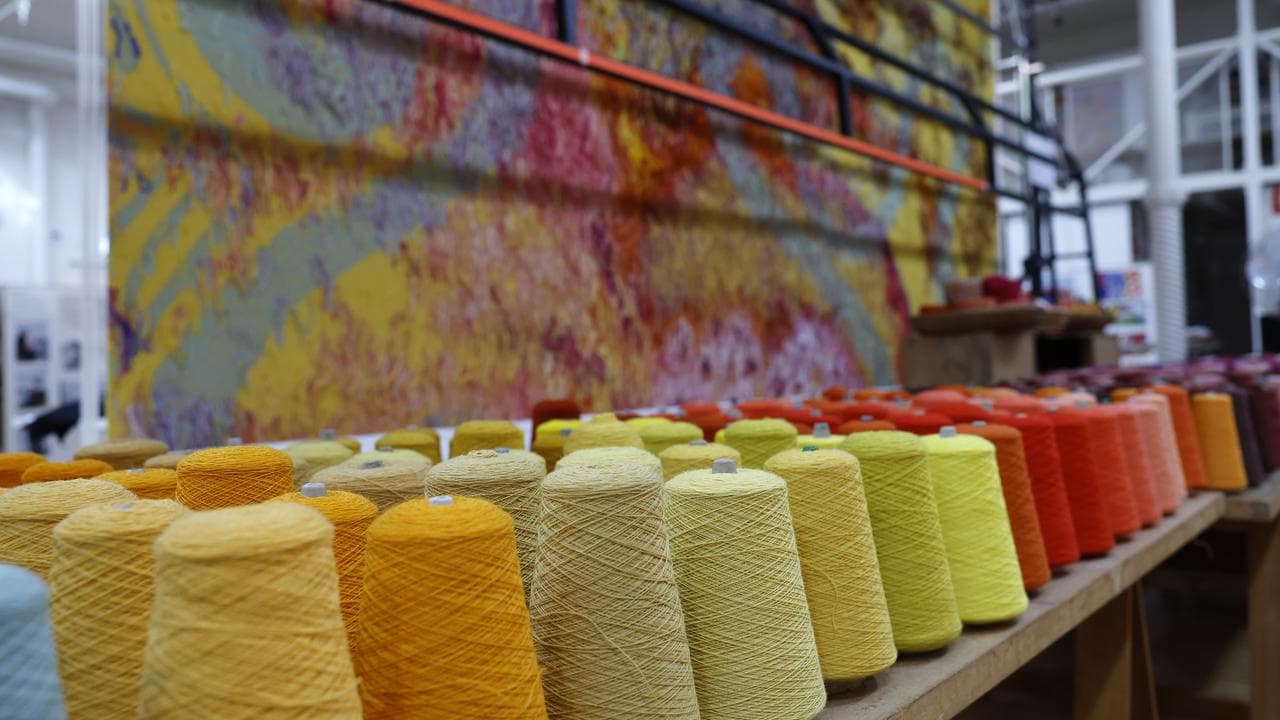
Using wool from Victorian farms, two dyeing specialists at the workshop made 103 colours of yarn for the project, including eight shades created specifically for the tapestry.
If kept out of direct sunlight, the weaving could last centuries - fragments of Coptic tapestries, for example, have survived from before the middle ages.
Construction of the hospital is slated for completion in 2025.




